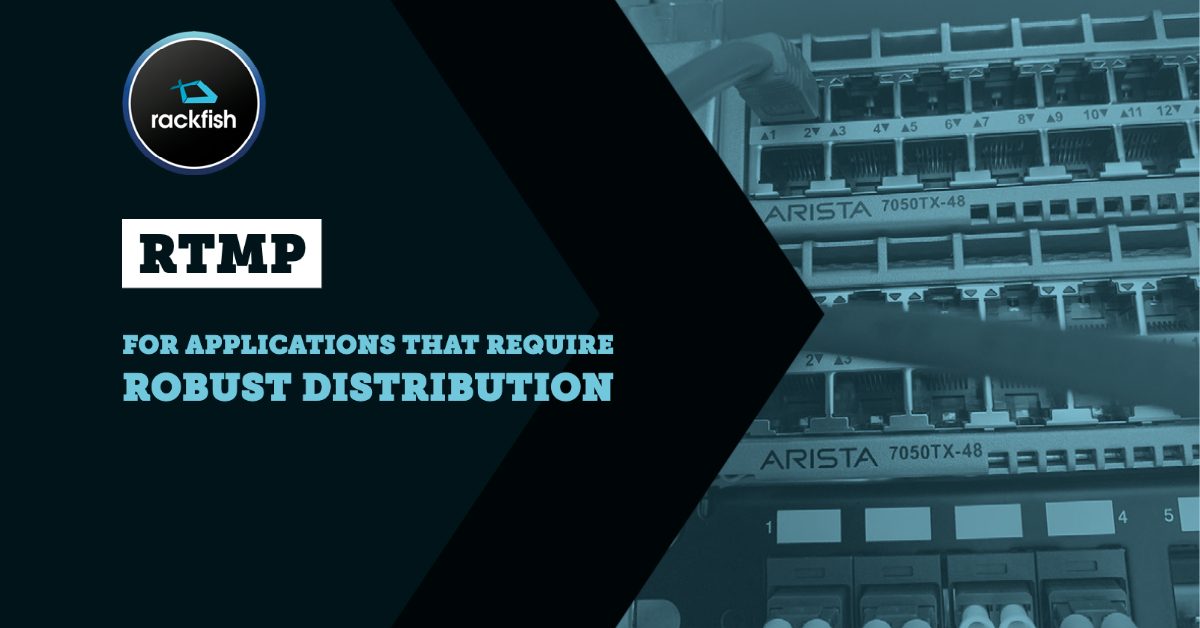Ultra-low latency with RTMP distribution
RTMP distribution 2022 onwards
The ability to manage RTMP is shrinking as Flash disappears from browsers and other end users.
However, in professional contexts, RTMP is still widely used. For those customers who have systems based on RTMP, robust infrastructure is needed for deployment. Rackfish can help.
Rackfish provides robust RTMP stream distribution options on a new redundant deployment platform.

Why Rackfish RTMP?
Rackfish RTMP deployment is based on a redundant infrastructure where nothing is left to chance.
RTMP ingestion / video input
The simplest solution is that at least one, preferably two for redundancy, RTMP feeds is sent to our ingest servers. We have the possibility to receive over the internet and for those who want extra control, we can control the input through different providers for increased security. We can also receive dedicated connections for input or output of already encoded RTMP or video to be encoded.
Processing of video streams
We work with several different media servers, including Wowza and Flussonic to manage the signals. This provides great opportunities for customization and special solutions. We also have solutions for hardware encoding where we can receive and send, for example, SDI.
RTMP Distribution
In the basic service, we offer distribution from our RTMP cluster connected to our backbone that transmits to the destinations. Thanks to our fully automated intelligent routing platform from Noction, traffic is monitored and optimized all the way through (for example to a receiving company).
Audience customization
For special markets or large volumes towards specific geographical areas, there is the possibility to set up local points-of-precense with high capacity and best reliability. We can receive a large number of formats and customize in hardware or software to RTMP. We have redundant equipment to handle SDI and fiber connections.

What is RTMP?
RTMP stands for Real Time Messaging Protocol and is a protocol primarily used to distribute video (but also audio and data), originally in Macromedia/Adobe Flash. RTMP is stable, fast, and can deliver low-latency video (also called low-latency, low-latency) where sub-second latency is possible. Such low delay, or latency, should be compared with, for example, the more modern HLS where the delay is usually measured in tens of seconds and up to one minute. Hence, it is still interesting to make use of the Real-Time Messaging Protocol for the distribution of video.

Who can use RTMP?
RTMP is an open specification that does not require Flash. Stability and low latency mean that it has come to be widely used to deliver video to the net (ingest) and distribute between equipment.
Most streaming-ready cameras, software, and the like can deliver RTMP. Video services from Rackfish that support RTMP include:
Rackfish Live, our customizable streaming service for those who have special requirements and needs.
Streamio, our online video platform where one live broadcast channel is included per account.
Rackfish RTMP distribution, contact us, describe your project and challenges and we will help you with the right solution!

Streaming to end users?
Support for RTMP in browsers is rapidly disappearing as Flash, which is required for the browser to download video, loses support. In cases where there is support, active actions (download plugin, launch plugin) are often required for it to work so this type of use is no longer recommended.
We at Rackfish can help you so that your live stream reaches end users, quickly and safely.
Get started with RTMP streamed deployment
Contact us
Send your details.
Book a meeting or give a call.
Describe your project
How do you distribute today? What are your needs in terms of number of recipients, volume, geography. Tell us about your challenges.
Suggestions from Rackfish
We develop a proposed solution with a price picture for further discussion or testing!
